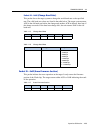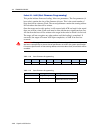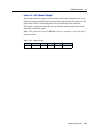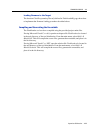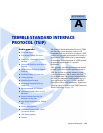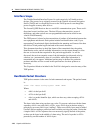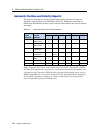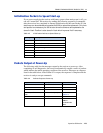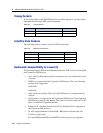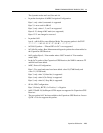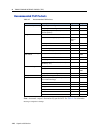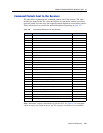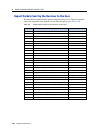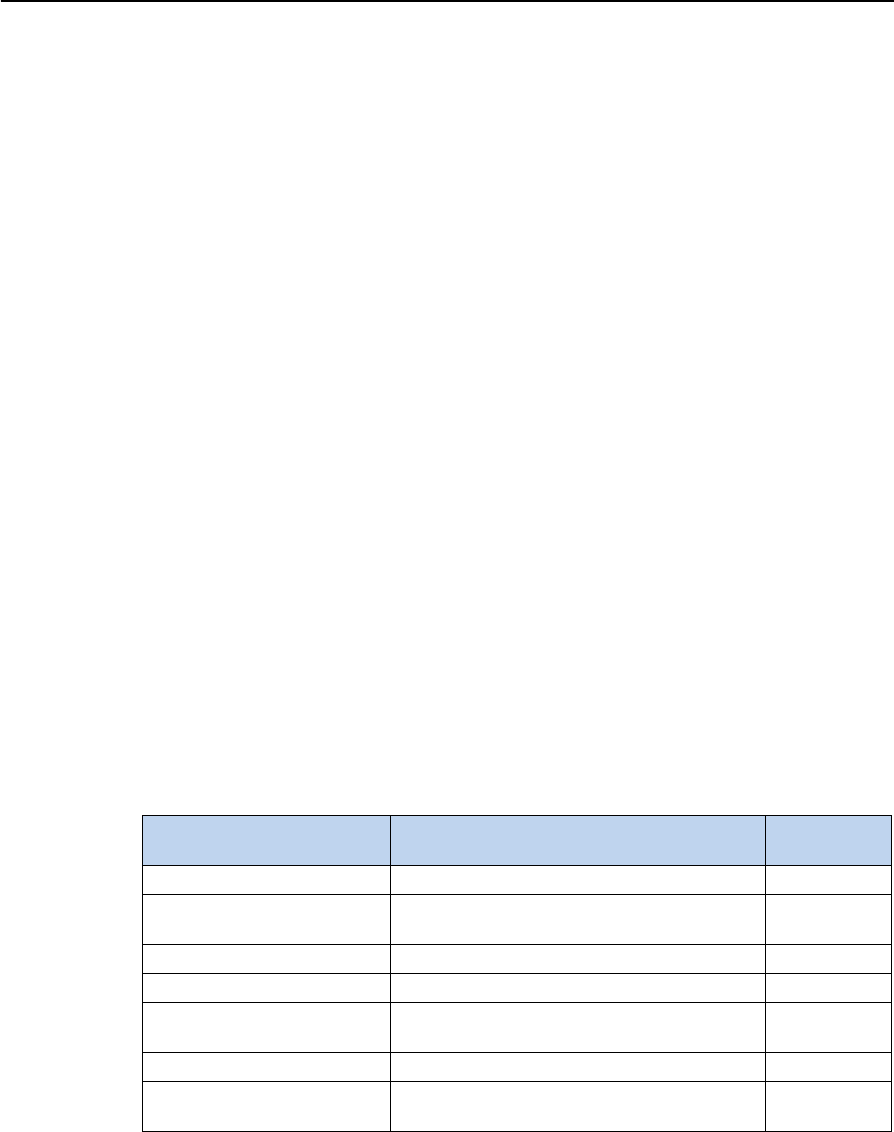
Copernicus GPS Receiver 121
TRIMBLE STANDARD INTERFACE PROTOCOL (TSIP) A
Multiple-byte numbers (integer, float, and double) follow the ANSI/IEEE Std. 754
IEEE Standard for binary Floating-Point Arithmetic. They are sent most-significant
byte first. This may involve switching the order of the bytes as they are normally
stored in Intel based machines. Specifically:
• UINT8 = Byte: An 8 bit unsigned integer.
• UINT16 = Word: A 16 bit unsigned integer.
• INT16 = Integer: A 16 bit integer.
• INT32 = Long: A 32 bit integer.
• UINT32 = ULong: A 32 bit unsigned integer.
• Single — Float, or 4 byte REAL has a precision of 24 significant bits, roughly
6.5 digits.
• Double — 8 byte REAL has a precision of 52 significant bits. It is a little better
than 15 digits.
Automatic Output Packets
The Lassen IQ GPS Receiver is configured to automatically output the following
packets. For minimal system implementations, these output packets provide all of the
information required for operation including time, position, velocity, and receiver and
satellite status and health. Position and velocity are reported using one or more of the
packets listed below, depending on the selected I/O options. While there are other
packets automatically output, the following packets provide the information most
commonly used. No input packets are required.
Table A.1 Automatic Output Packets
Output Packet ID Description Reporting
Interval
0x41 GPS time 1 second
0x42, 0x83, 0x4A, 0x84, 0x8F-
20
position (choose packet with I/O options) 1 second
0x43, 0x56, 0x8F-20 velocity (choose packet with I/O options) 1 second
0x46 health of receiver 1 second
0x4B machinecode/status (includes antenna fault
detect)
1 second
0x6D all-in-view satellite selection, DOPs, Fix Mode 1 second
0x82 SBAS fix mode (always the last packet of the
fix information)
1 second



